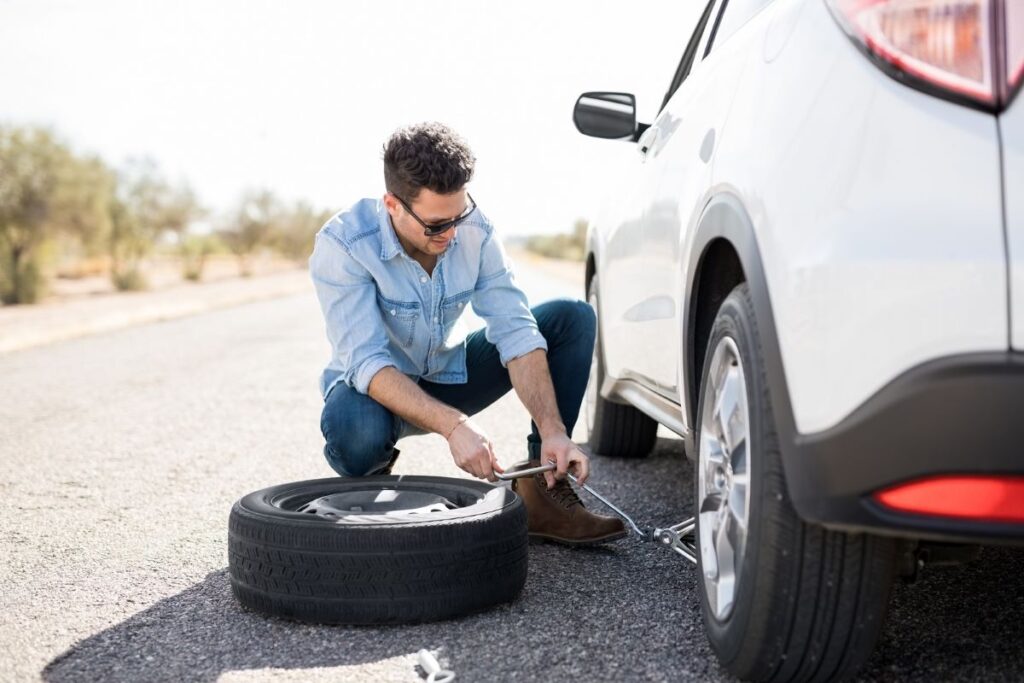Nothing puts a damper on a road trip like a sudden roadside emergency. Knowing how to handle these situations can make a huge difference in keeping your stress levels down and your journey on track.
1. Flat Tire
A flat tire is one of the most common roadside emergencies. It can happen unexpectedly, leaving you stranded until you can change the tire or call for assistance. Having a spare tire, jack, and lug wrench in your car and knowing how to use them is crucial for getting back on the road quickly.
2. Dead Battery
A dead battery can leave you helpless, especially if it happens in a remote area or during harsh weather conditions. Knowing how to jump-start a battery or having a portable jumpstarter can save you from being stuck. Make sure your jump cables are in your trunk and that you understand the proper jump-starting procedure.
3. Engine Overheating
An overheating engine can cause serious damage if not addressed promptly. If your temperature gauge rises or you see steam coming from the hood, pull over safely and turn off the engine. Allow it to cool down before checking the coolant level and adding more if necessary, but never open the radiator cap while the engine is hot.
4. Running Out of Gas
Running out of gas is more common than you might think, especially if you’re running low on fuel and drive into an unfamiliar area. Keep a gas can in your trunk or ensure you have roadside assistance coverage to help you get a fuel delivery. It’s also a good habit to refuel before your tank gets too low.
5. Locking Yourself Out
Locking yourself out of your car can be incredibly frustrating, particularly if you’re in a hurry or in an unsafe area. Have a spare key hidden in a secure location or use a magnetic key holder. Many modern vehicles also offer remote unlocking services through mobile apps.
6. Brake Failure
Brake failure is a critical situation that demands immediate attention. If your brakes fail, pump the brake pedal to build up pressure, downshift to lower gears, and use the emergency brake cautiously. Safely maneuver to a stop and call for roadside assistance or a tow truck as soon as possible.
7. Accidents and Collisions
Being involved in an accident can be overwhelming, especially if there are injuries or significant damage. Ensure everyone is safe, call emergency services if needed, and exchange information with other parties involved. Document the scene and contact your insurance company to report the incident.
8. Mechanical Failure
Mechanical failures, such as problems with the transmission or power steering, can leave you stranded and unable to drive. If you experience any unusual noises or difficulty steering, pull over safely and call for roadside assistance or a tow truck. Regular maintenance can help prevent these issues.
9. Running Off the Road
If you run off the road or skid in poor weather conditions, stay calm and avoid jerky movements. Gently steer back onto the road when it’s safe, and use your brakes sparingly. If you can’t regain control, pull over to a safe spot and call for help.
10. Severe Weather Conditions
Severe weather conditions like heavy rain, snow, or ice can make driving dangerous and increase the likelihood of roadside emergencies. Equip your car with an emergency kit, including blankets, food, and a flashlight. In extreme conditions, it’s best to stay put and wait for help rather than risk driving.
Be Prepared, Stay Safe

Roadside emergencies can catch anyone off guard, but with the proper preparation, you can tackle them confidently. Ensure you have the essentials and know what to do in each situation—so you’re ready for the unexpected.
Featured Image Credit: Shutterstock / antoniodiaz.
The content of this article is for informational purposes only and does not constitute or replace professional advice.
The images used are for illustrative purposes only and may not represent the actual people or places mentioned in the article.
For transparency, this content was partly developed with AI assistance and carefully curated by an experienced editor to be informative and ensure accuracy.









